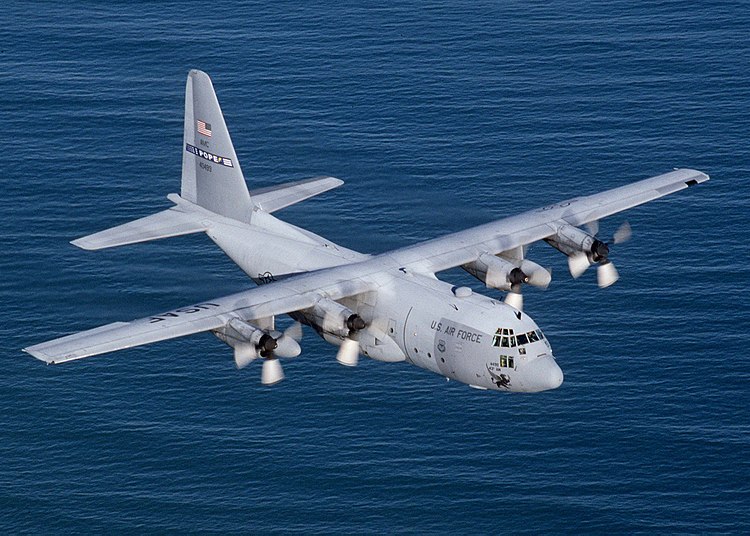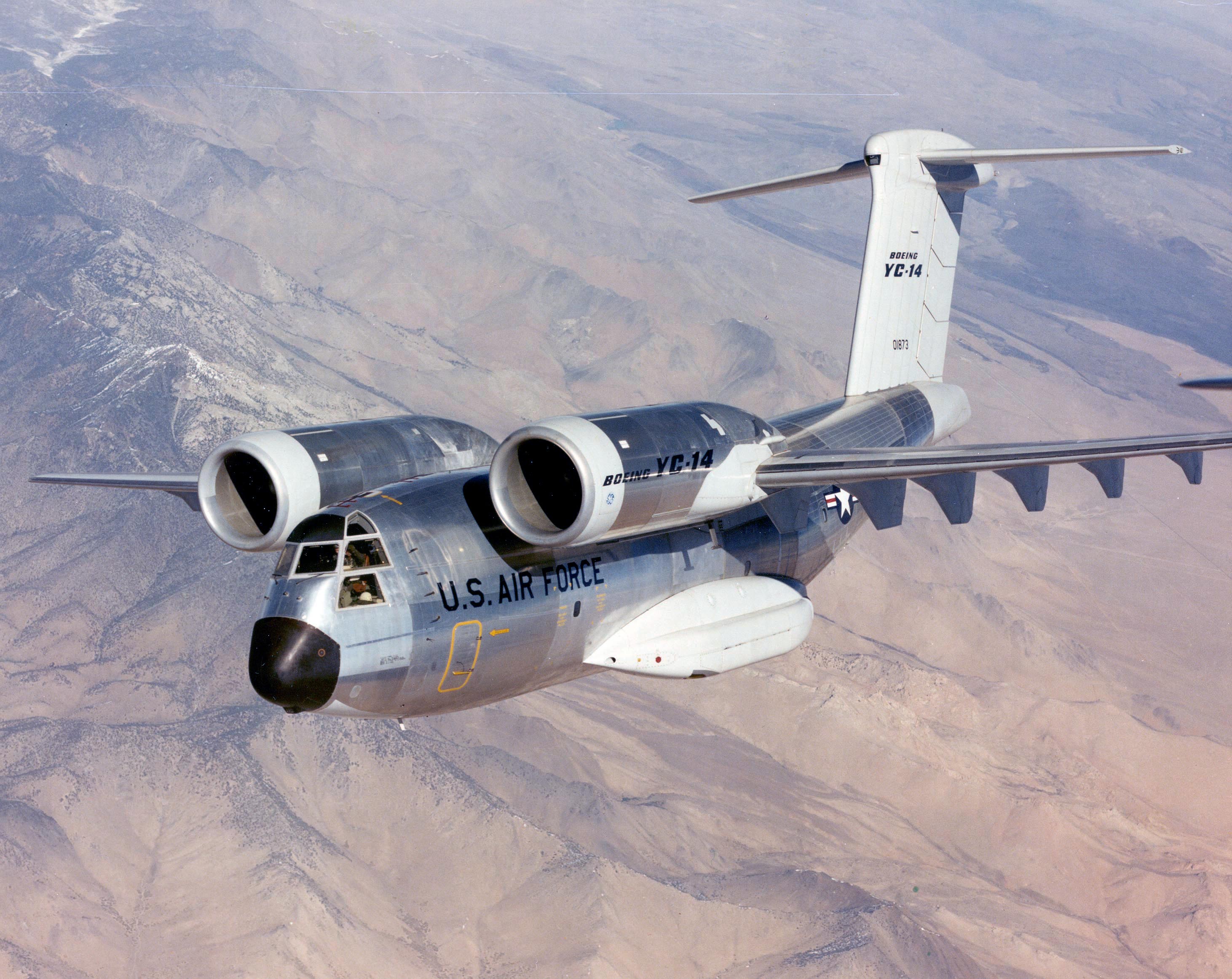A400M first flight this morning
Discussion
theboyfold said:
Why do big military planes tend to use propellers instead of jet engines?
I think the majority of 'big military planes' use Jet engines.
The A400M would slot in between a C130 and a C17 in size.
A400M
Length - 148ft
Wingspan - 139ft
C130
Length - 97ft
Wingspan - 132ft
C17
Length - 174ft
Wingspan - 170ft
Edited by el stovey on Friday 11th December 14:08
I always think of this when I think of big military planes:
http://en.wikipedia.org/wiki/C-130_Hercules

http://en.wikipedia.org/wiki/C-130_Hercules

Turboprops are more effecient at certain flight regimes, providing high thrust and good gallons per hour for short take off and low relatively slow flights, yet still allowing for a good cruising performance.
High bypass turbofans are good at high subsonic cruising speeds and relatively high altitudes which is why it is usual for airliners and strategic airlift such as the AN-124 and C-5 and delivery good gallons per mile.
Low bypass turbofans such as found in fighters are much less efficient but that doesnt really matter as much as performance.
High bypass turbofans are good at high subsonic cruising speeds and relatively high altitudes which is why it is usual for airliners and strategic airlift such as the AN-124 and C-5 and delivery good gallons per mile.
Low bypass turbofans such as found in fighters are much less efficient but that doesnt really matter as much as performance.
Eric Mc said:
They are jet engines. They are turborops which is a jet turbine driving a propellor through a gearbox assembly.
Turboprops are usually slower than a straight jet or turbofan but they are more fuel efficient which means that, for a given fuel load, will have a longer range.
Turboprops are usually slower than a straight jet or turbofan but they are more fuel efficient which means that, for a given fuel load, will have a longer range.
Mr Dave said:
Turboprops are more effecient at certain flight regimes, providing high thrust and good gallons per hour for short take off and low relatively slow flights, yet still allowing for a good cruising performance.
High bypass turbofans are good at high subsonic cruising speeds and relatively high altitudes which is why it is usual for airliners and strategic airlift such as the AN-124 and C-5 and delivery good gallons per mile.
Low bypass turbofans such as found in fighters are much less efficient but that doesnt really matter as much as performance.
Thanks guys, I'm not that 'up' on planes I have to say!High bypass turbofans are good at high subsonic cruising speeds and relatively high altitudes which is why it is usual for airliners and strategic airlift such as the AN-124 and C-5 and delivery good gallons per mile.
Low bypass turbofans such as found in fighters are much less efficient but that doesnt really matter as much as performance.
Chrisgr31 said:
I am sure I read this question on PPRUNE recently and the general consenus was that military transport aircraft often have propellors for the short take off/landing capabilities
I don't think that this is such an issue these days. With the right wing arrangement - and clever directing of the jet exhaust, you can achieve STOL petrformance from a turbofan aircraft

I was always told that props are much better at resisting damage during rough field landings than straight turbine engines.
I know there was a lot of resistance from operators when they introduced the C-130 'J' because it had carbon prop blades and they had much smaller damage limits than the old metal blades.
I know there was a lot of resistance from operators when they introduced the C-130 'J' because it had carbon prop blades and they had much smaller damage limits than the old metal blades.
The C-17 has conventional underslung engines, but directs the jet efflux onto the lowered flaps, which gives it very good STOL performance and low speed handling. You can see the bare metal areas of the flaps (with exhaust staining) on this picture:

So the STOL performance benefits of a turboprop aren't so clear cut anymore. Of course, Airbus are pushing the fact that underslung turbofans are much more susceptible to FOD when using rough strips, but is this really such a big advantage I wonder?
Daft as it sounds, I wouldn't be surprised that given the similarities in performance, the decision to go with turboprops might have been less to do with performance, and more to do with marketing.

So the STOL performance benefits of a turboprop aren't so clear cut anymore. Of course, Airbus are pushing the fact that underslung turbofans are much more susceptible to FOD when using rough strips, but is this really such a big advantage I wonder?
Daft as it sounds, I wouldn't be surprised that given the similarities in performance, the decision to go with turboprops might have been less to do with performance, and more to do with marketing.
eccles said:
I was always told that props are much better at resisting damage during rough field landings than straight turbine engines.
I know there was a lot of resistance from operators when they introduced the C-130 'J' because it had carbon prop blades and they had much smaller damage limits than the old metal blades.
Right. There is less chance of FOD on unimproved landing areas with turboprops rather than jets.I know there was a lot of resistance from operators when they introduced the C-130 'J' because it had carbon prop blades and they had much smaller damage limits than the old metal blades.
Nah - nothing to do with marketing, this project in its various guises has been both TP and Turbofan powered over the years (for this project has been going since the 80's as the FLA etc......). I would suggest that it is to do with resistance to damage, customer preference, and also low speed aerodynamics and handling (inc. better handling under engine failure conditions I expect).
I would think that the decision to go with TP's wasn't the easiest to make since this powerplant and drivetrain have been pretty much developed from new. These are pretty big engines - not sure but they may be bigger than the An-70's engines. A downside of the aerodynamic decision to have the props moving in different directions (down between engines I think) is that the gearboxes are handed, so squadrons will have to deploy with more spare parts, and also have to deal with making sure they are fitting the right parts.
As an interesting aside - I'd like to see a short haul aircraft concept with two of these engines - I think it could be quite interesting.
Anyway - congrats to the flight crew and all those involved (hope my bits lived up to spec!)
I would think that the decision to go with TP's wasn't the easiest to make since this powerplant and drivetrain have been pretty much developed from new. These are pretty big engines - not sure but they may be bigger than the An-70's engines. A downside of the aerodynamic decision to have the props moving in different directions (down between engines I think) is that the gearboxes are handed, so squadrons will have to deploy with more spare parts, and also have to deal with making sure they are fitting the right parts.
As an interesting aside - I'd like to see a short haul aircraft concept with two of these engines - I think it could be quite interesting.
Anyway - congrats to the flight crew and all those involved (hope my bits lived up to spec!)
Turboprops have a very good static thrust (great for short take off) however the rate at which their thrust decreases with speed (lapse rate) is not good. They also have a better Specific Fuel Consumption (amount of fuel per unit of thrust per hour).
One of the key reasons they are more efficient (propulsive efficiency) is because they accelerate a large mass of air a small amount instead of a small amount of air a large amount. To understand this, think about imparting the same amount of momentum to a large mass (A) and to a small mass (B) of air. If A is ten times larger than B then B will need to be accelerated to ten times the speed of A to have the same momentum. However (due to Kinetic Energy = 0.5 * Mass * Velocity * Velocity) you will have to give B TEN times the amount of kinetic energy (which ultimately comes from chemical energy in your fuel).
On the other hand, the amount of thrust you create is a function of the difference (which we'll call delta) between the exhaust velocity and the aircraft velocity. If delta is small even when stationary (as on a turboprop) then it'll very quickly approach zero. If our mass A was going at 50m/s and B was going 500m/s then as soon as your aircraft hit 10m/s (~26 mph) then you'd have lost a fifth of your thrust as opposed to 2% for B.
Hope that makes sense.
One of the key reasons they are more efficient (propulsive efficiency) is because they accelerate a large mass of air a small amount instead of a small amount of air a large amount. To understand this, think about imparting the same amount of momentum to a large mass (A) and to a small mass (B) of air. If A is ten times larger than B then B will need to be accelerated to ten times the speed of A to have the same momentum. However (due to Kinetic Energy = 0.5 * Mass * Velocity * Velocity) you will have to give B TEN times the amount of kinetic energy (which ultimately comes from chemical energy in your fuel).
On the other hand, the amount of thrust you create is a function of the difference (which we'll call delta) between the exhaust velocity and the aircraft velocity. If delta is small even when stationary (as on a turboprop) then it'll very quickly approach zero. If our mass A was going at 50m/s and B was going 500m/s then as soon as your aircraft hit 10m/s (~26 mph) then you'd have lost a fifth of your thrust as opposed to 2% for B.
Hope that makes sense.
Gassing Station | Boats, Planes & Trains | Top of Page | What's New | My Stuff





